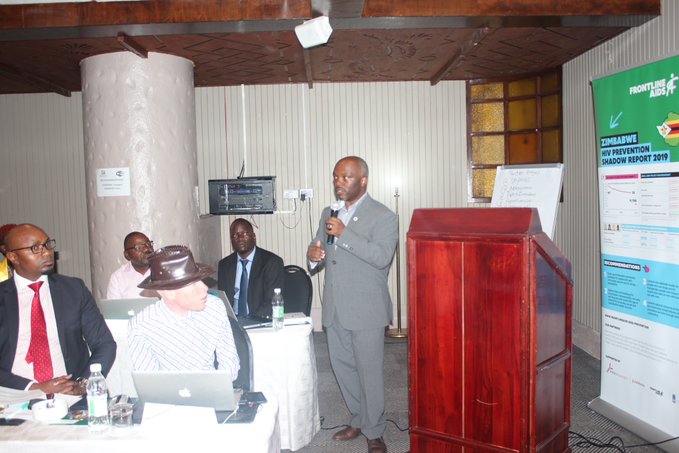By Joyce Mukucha
As the Southern Africa HIV and AIDS Information Dissemination Service (SafAIDS) in collaboration with other Civil Society Organisations (CSOs), Government officials, policy makers, beneficiaries and implementing partners launched the 2019 Zimbabwe HIV Prevention Shadow Report, a plethora of recommendations have been made for Zimbabwe to meet the global and national prevention response targets.
The report’s main thrust is aimed at analysing the common barriers to progress including lack of political leadership, enabling laws and policies and funding for the implementation of combination prevention programmes in the year 2019 thereby paving a way forward to a better performance of HIV prevention 2020 road map.
In his presentation during the report launch on the 5th of February 2020, the UNAIDS Fast-Track Advisor, Charles Birungi said there was need for concerted efforts in accelerating prevention to ensure that there is zero tolerance to new infections, discrimination and AIDS related deaths.
“We cannot treat our own way out of the epidemic. 90-90-90 does not mean we have won. We need to scale up prevention to legitimise our fight against HIV and to reinforce the efforts of 90-90-90 target, no one should die,” he said.
Explaining the key findings of the 2019 Zimbabwe HIV prevention Shadow Report, the PITCH focal person within SafAIDS, Lloyd Dembure highlighted that in the last year, Zimbabwe continued to make good progress in implementing the prevention road map. However, he explained that there were still gaps in as much as plans to implement policies and recommendations and emphasized that the gaps need to be urgently addressed to ensure that there is no impediments to HIV prevention response.
The National Aids Council (NAC) Monitoring and Evaluation Director, Amon Mpofu said it was imperative for interventions to be made in 2020 to beat the AIDS epidemic in Zimbabwe with focus on crucial areas such as Key Populations.
“It is of paramount importance for civil society to engage key population groups, in particular in setting and endorsing new prevention targets at sub-national levels. National targets should also be revised to include transgender people and people who use drugs,” he said.
He added that it was important to significantly improve programming at national, provincial and district level so as to make a good progress in as much as prevention is concerned. He said there was need for early initiation on ART for patients and to ensure that people access medication at the right time and at the right place. For Adolescent Girls and Young Women, Mpofu said programmes would be rolled out in Zimbabwe to contribute to a reduction in the new infections among adolescents and young women between 10 to 24 years of age by 2021.
“There is need to adopt healthy lifestyle practices that promote healthy living, reduce new HIV infections and also it is important to address socio-cultural and legal barriers that hinder access to services. We need programmes that have a positive impact on people’s lives. Therefore, it is crucial to make sure that girls in rural communities are also reached and involved in every step taken.”
Being guided by a global 10-point plan HIV Prevention 2020 Road Map, participants and representatives from different organisations suggested that there was need to initiate new population size estimation studies that include all key populations, including transgender people and people who use drugs. They said the process must be open and transparent and include key population led organisations.
SafAIDS also reiterated calls to amplify the critical role that communities play in addressing HIV as a public threat taday, and every other day. Global targets stipulate that 30 percent of service delivery will be community driven by 2020. In line with these, stakeholders pointed out that community-based organisations’ contributions to national prevention response should be valued.
The 10-point plan also includes the development of capacity building and technical assistance plan, strengthening of national and international accountability, establishment of programme monitoring systems among other key priorities.
According to the report, one positive development is in harm reduction where civil society and networks of people who use drugs have been actively engaged with government representatives in the development of a Drug Control Master Plan. However, detailed activities are yet to be shared.
SAfAIDS’ mission is to promote effective and ethical development responses to the epidemic and its impact through HIV and AIDS knowledge management, capacity development, advocacy, policy analysis and documentation.
